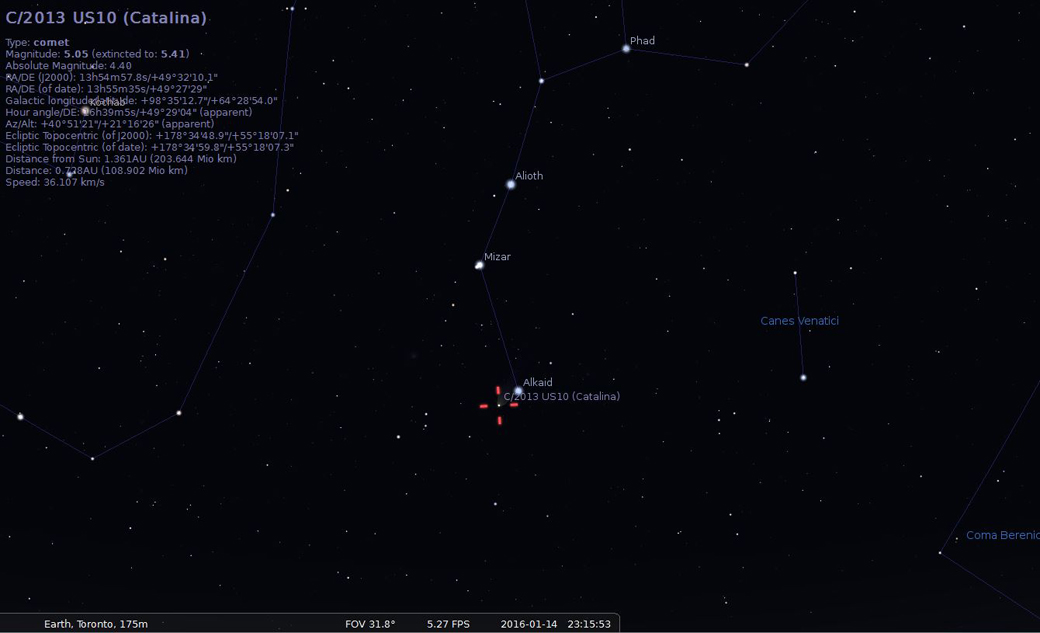If you have binoculars, get them ready: a beautiful comet is now gracing our night sky.

Comet C/2013 US10 — otherwise referred to as Comet Catalina — has been low in the night sky over the past few weeks in Canada.
The great part is that over the next three days — from Jan. 8 to 10 — there will be a moonless night sky, and that means you have a great chance to see it.
Finding it is actually pretty easy — if you know where to look.
As of Thursday, the comet rises just before midnight in the east near the bright star Arcturus (it will be the brightest star in the east).
Over the next week, it will move daily toward the northeast toward the first star in the Big Dipper’s handle. On Jan. 14, it will be less than a degree from Alkaid, the first star in the handle. This means that it’ll be easier for you to spot.
What can you expect to see? Well, it will look like a fuzzy circle in your field of view. If you have a telescope, of course, you’ll be able to see it in a bit more detail. (Put that Christmas gift to good use!)

Get daily National news
Though the comet will be just above the horizon after midnight, it’s best to wait until it rises higher in the sky, which could take you into the wee hours of the morning.
However, it will continue to rise higher and higher in the night sky, rising earlier each night. So you could just wait, though you risk the comet becoming dimmer over time.
Catalina is moving away from the sun, however, it’s nearing Earth, which is the reason that it’s not dimming in brightness just yet. On Jan. 17, the comet will be the closest to Earth in its orbit, a mere 110 million km away (that’s pretty close on an astronomical level).
Comet C2013 U10 (Catalina) was discovered on Oct. 31, 2013 by the Catalina Sky Survey, a project that sets out to discover potentially hazardous asteroids and near-Earth objects. Scientists believe that the comet originates from the Oort Cloud, a bubble of icy debris left over from the formation of our solar system 4.6 billion years ago.








Comments